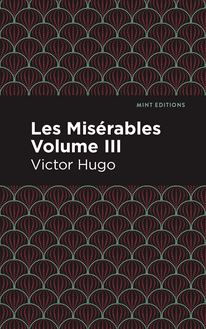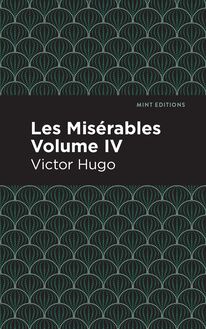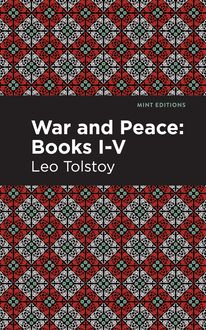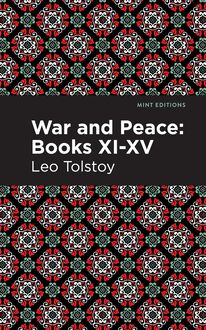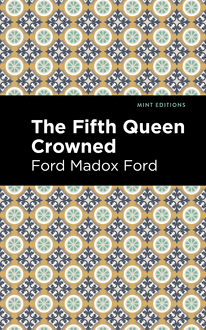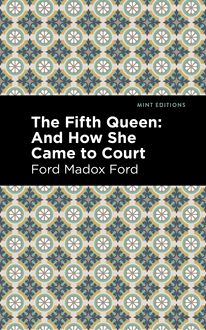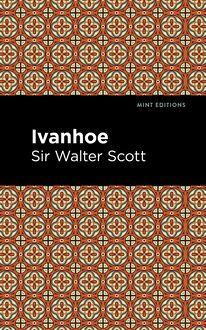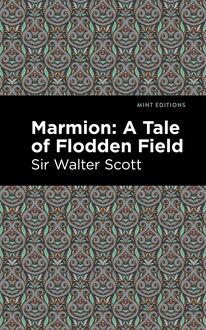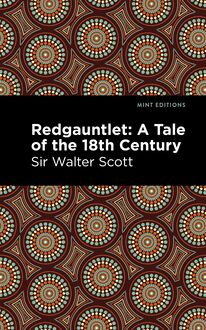-
 Univers
Univers
-
 Ebooks
Ebooks
-
 Livres audio
Livres audio
-
 Presse
Presse
-
 Podcasts
Podcasts
-
 BD
BD
-
 Documents
Documents
-
- Cours
- Révisions
- Ressources pédagogiques
- Sciences de l’éducation
- Manuels scolaires
- Langues
- Travaux de classe
- Annales de BEP
- Etudes supérieures
- Maternelle et primaire
- Fiches de lecture
- Orientation scolaire
- Méthodologie
- Corrigés de devoir
- Annales d’examens et concours
- Annales du bac
- Annales du brevet
- Rapports de stage
La lecture à portée de main
Vous pourrez modifier la taille du texte de cet ouvrage
Découvre YouScribe en t'inscrivant gratuitement
Je m'inscrisDécouvre YouScribe en t'inscrivant gratuitement
Je m'inscrisEn savoir plus
Vous pourrez modifier la taille du texte de cet ouvrage
En savoir plus

Description
War and Peace (1869) is a novel by Russian writer Leo Tolstoy. Serialized between 1865 and 1867, it was published in book form in 1869 and has since been recognized as a masterpiece of world literature. Notable for its epic scale, War and Peace encompasses hundreds of characters, diligently following its five central families across fifteen years while featuring detailed imaginings of such historical figures as Napoleon Bonaparte. In Books XI-XV, Tolstoy depicts the loss of Moscow, the final struggle against French forces, and the beginning of a new era for Russia, Europe, and the world. French forces under Napoleon Bonaparte leave the Russian military and people with no choice. Not only must they abandon Moscow, they must burn it to the ground in order to slow the Grande Armée’s advance. The Rostov family leaves in a hurry, bringing with them the mortally wounded Prince Andrei, who is nursed by his beloved Natasha. Meanwhile, Pierre hatches a plan to assassinate Napoleon, but is soon captured and threatened with execution. As he awaits his fate in prison, guerrilla fighters manage to repel the French, forcing Napoleon’s disastrous retreat. With its depiction of the brutalities of war on individuals and society alike, Tolstoy’s story brings history to life while reminding us that the past is always closer than we care to think. As ambitious as it is triumphant, Leo Tolstoy’s masterpiece is an epic novel of history and family, a story of faith and the will to persevere in the face of unspeakable catastrophe. War and Peace is a work that transcends both history and description, not just for the scale of its narrative and setting, but for the scope of its philosophical interests. Since its publication, it has been praised as an essential work of literature by Ivan Turgenev, Gustave Flaubert, Thomas Mann, and Ernest Hemingway, and has been adapted for film, theater, and television countless times. With a beautifully designed cover and professionally typeset manuscript, this edition of Leo Tolstoy’s War and Peace is a classic of Russian literature reimagined for modern readers.
Sujets
Informations
| Publié par | Mint Editions |
| Date de parution | 22 juin 2021 |
| Nombre de lectures | 0 |
| EAN13 | 9781513286846 |
| Langue | English |
| Poids de l'ouvrage | 3 Mo |
Informations légales : prix de location à la page 0,0500€. Cette information est donnée uniquement à titre indicatif conformément à la législation en vigueur.
Extrait
War and Peace
Books XI–XV
Leo Tolstoy
War and Peace: Books XI–XV was first published in 1867.
This edition published by Mint Editions 2021.
ISBN 9781513281827 | E-ISBN 9781513286846
Published by Mint Editions®
minteditionbooks.com
Publishing Director: Jennifer Newens
Design & Production: Rachel Lopez Metzger
Project Manager: Micaela Clark
Translated by: Louise and Aylmer Maude
Typesetting: Westchester Publishing Services
C ONTENTS B OOK E LEVEN . 1812 I II III IV V VI VII VIII IX X XI XII XIII XIV XV XVI XVII XVIII XIX XX XXI XXII XXIII XXIV XXV XXVI XXVII XXVIII XXIX XXX XXXI XXXII XXXIII XXXIV B OOK T WELVE . 1812 I II III IV V VI VII VIII IX X XI XII XIII XIV XV XVI B OOK T HIRTEEN . 1812 I II III IV V VI VII VIII IX X XI XII XIII XIV XV XVI XVII XVIII XIX B OOK F OURTEEN . 1812 I II III IV V VI VII VIII IX X XI XII XIII XIV XV XVI XVII XVIII XIX B OOK F IFTEEN . 1812–13 I II III IV V VI VII VIII IX X XI XII XIII XIV XV XVI XVII XVIII XIX XX
BOOK ELEVEN
1812
I
A bsolute continuity of motion is not comprehensible to the human mind. Laws of motion of any kind become comprehensible to man only when he examines arbitrarily selected elements of that motion; but at the same time, a large proportion of human error comes from the arbitrary division of continuous motion into discontinuous elements. There is a well-known, so-called sophism of the ancients consisting in this, that Achilles could never catch up with a tortoise he was following, in spite of the fact that he traveled ten times as fast as the tortoise. By the time Achilles has covered the distance that separated him from the tortoise, the tortoise has covered one tenth of that distance ahead of him: when Achilles has covered that tenth, the tortoise has covered another one hundredth, and so on forever. This problem seemed to the ancients insoluble. The absurd answer (that Achilles could never overtake the tortoise) resulted from this: that motion was arbitrarily divided into discontinuous elements, whereas the motion both of Achilles and of the tortoise was continuous.
By adopting smaller and smaller elements of motion we only approach a solution of the problem, but never reach it. Only when we have admitted the conception of the infinitely small, and the resulting geometrical progression with a common ratio of one tenth, and have found the sum of this progression to infinity, do we reach a solution of the problem.
A modern branch of mathematics having achieved the art of dealing with the infinitely small can now yield solutions in other more complex problems of motion which used to appear insoluble.
This modern branch of mathematics, unknown to the ancients, when dealing with problems of motion admits the conception of the infinitely small, and so conforms to the chief condition of motion (absolute continuity) and thereby corrects the inevitable error which the human mind cannot avoid when it deals with separate elements of motion instead of examining continuous motion.
In seeking the laws of historical movement just the same thing happens. The movement of humanity, arising as it does from innumerable arbitrary human wills, is continuous.
To understand the laws of this continuous movement is the aim of history. But to arrive at these laws, resulting from the sum of all those human wills, man’s mind postulates arbitrary and disconnected units. The first method of history is to take an arbitrarily selected series of continuous events and examine it apart from others, though there is and can be no beginning to any event, for one event always flows uninterruptedly from another.
The second method is to consider the actions of some one man—a king or a commander—as equivalent to the sum of many individual wills; whereas the sum of individual wills is never expressed by the activity of a single historic personage.
Historical science in its endeavor to draw nearer to truth continually takes smaller and smaller units for examination. But however small the units it takes, we feel that to take any unit disconnected from others, or to assume a beginning of any phenomenon, or to say that the will of many men is expressed by the actions of any one historic personage, is in itself false.
It needs no critical exertion to reduce utterly to dust any deductions drawn from history. It is merely necessary to select some larger or smaller unit as the subject of observation—as criticism has every right to do, seeing that whatever unit history observes must always be arbitrarily selected.
Only by taking infinitesimally small units for observation (the differential of history, that is, the individual tendencies of men) and attaining to the art of integrating them (that is, finding the sum of these infinitesimals) can we hope to arrive at the laws of history.
The first fifteen years of the nineteenth century in Europe present an extraordinary movement of millions of people. Men leave their customary pursuits, hasten from one side of Europe to the other, plunder and slaughter one another, triumph and are plunged in despair, and for some years the whole course of life is altered and presents an intensive movement which first increases and then slackens. What was the cause of this movement, by what laws was it governed? asks the mind of man.
The historians, replying to this question, lay before us the sayings and doings of a few dozen men in a building in the city of Paris, calling these sayings and doings “the Revolution”; then they give a detailed biography of Napoleon and of certain people favorable or hostile to him; tell of the influence some of these people had on others, and say: that is why this movement took place and those are its laws.
But the mind of man not only refuses to believe this explanation, but plainly says that this method of explanation is fallacious, because in it a weaker phenomenon is taken as the cause of a stronger. The sum of human wills produced the Revolution and Napoleon, and only the sum of those wills first tolerated and then destroyed them.
“But every time there have been conquests there have been conquerors; every time there has been a revolution in any state there have been great men,” says history. And, indeed, human reason replies: every time conquerors appear there have been wars, but this does not prove that the conquerors caused the wars and that it is possible to find the laws of a war in the personal activity of a single man. Whenever I look at my watch and its hands point to ten, I hear the bells of the neighboring church; but because the bells begin to ring when the hands of the clock reach ten, I have no right to assume that the movement of the bells is caused by the position of the hands of the watch.
Whenever I see the movement of a locomotive I hear the whistle and see the valves opening and wheels turning; but I have no right to conclude that the whistling and the turning of wheels are the cause of the movement of the engine.
The peasants say that a cold wind blows in late spring because the oaks are budding, and really every spring cold winds do blow when the oak is budding. But though I do not know what causes the cold winds to blow when the oak buds unfold, I cannot agree with the peasants that the unfolding of the oak buds is the cause of the cold wind, for the force of the wind is beyond the influence of the buds. I see only a coincidence of occurrences such as happens with all the phenomena of life, and I see that however much and however carefully I observe the hands of the watch, and the valves and wheels of the engine, and the oak, I shall not discover the cause of the bells ringing, the engine moving, or of the winds of spring. To that I must entirely change my point of view and study the laws of the movement of steam, of the bells, and of the wind. History must do the same. And attempts in this direction have already been made.
To study the laws of history we must completely change the subject of our observation, must leave aside kings, ministers, and generals, and study the common, infinitesimally small elements by which the masses are moved. No one can say in how far it is possible for man to advance in this way toward an understanding of the laws of history; but it is evident that only along that path does the possibility of discovering the laws of history lie, and that as yet not a millionth part as much mental effort has been applied in this direction by historians as has been devoted to describing the actions of various kings, commanders, and ministers and propounding the historians’ own reflections concerning these actions.
II
T he forces of a dozen European nations burst into Russia. The Russian army and people avoided a collision till Smol é nsk was reached, and again from Smol é nsk to Borodin ó . The French army pushed on to Moscow, its goal, its impetus ever increasing as it neared its aim, just as the velocity of a falling body increases as it approaches the earth. Behind it were seven hundred miles of hunger-stricken, hostile country; ahead were a few dozen miles separating it from its goal. Every soldier in Napoleon’s army felt this and the invasion moved on by its own momentum.
The more the Russian army retreated the more fiercely a spirit of hatred of the enemy flared up, and while it retreated the army increased and consolidated. At Borodin ó a collision took place. Neither army was broken up, but the Russian army retreated immediately after the collision as inevitably as a ball recoils after colliding with another having a greater momentum, and with equal inevitability the ball of invasion that had advanc
-
 Univers
Univers
-
 Ebooks
Ebooks
-
 Livres audio
Livres audio
-
 Presse
Presse
-
 Podcasts
Podcasts
-
 BD
BD
-
 Documents
Documents
-
Jeunesse
-
Littérature
-
Ressources professionnelles
-
Santé et bien-être
-
Savoirs
-
Education
-
Loisirs et hobbies
-
Art, musique et cinéma
-
Actualité et débat de société
-
Jeunesse
-
Littérature
-
Ressources professionnelles
-
Santé et bien-être
-
Savoirs
-
Education
-
Loisirs et hobbies
-
Art, musique et cinéma
-
Actualité et débat de société
-
Actualités
-
Lifestyle
-
Presse jeunesse
-
Presse professionnelle
-
Pratique
-
Presse sportive
-
Presse internationale
-
Culture & Médias
-
Action et Aventures
-
Science-fiction et Fantasy
-
Société
-
Jeunesse
-
Littérature
-
Ressources professionnelles
-
Santé et bien-être
-
Savoirs
-
Education
-
Loisirs et hobbies
-
Art, musique et cinéma
-
Actualité et débat de société
- Cours
- Révisions
- Ressources pédagogiques
- Sciences de l’éducation
- Manuels scolaires
- Langues
- Travaux de classe
- Annales de BEP
- Etudes supérieures
- Maternelle et primaire
- Fiches de lecture
- Orientation scolaire
- Méthodologie
- Corrigés de devoir
- Annales d’examens et concours
- Annales du bac
- Annales du brevet
- Rapports de stage


